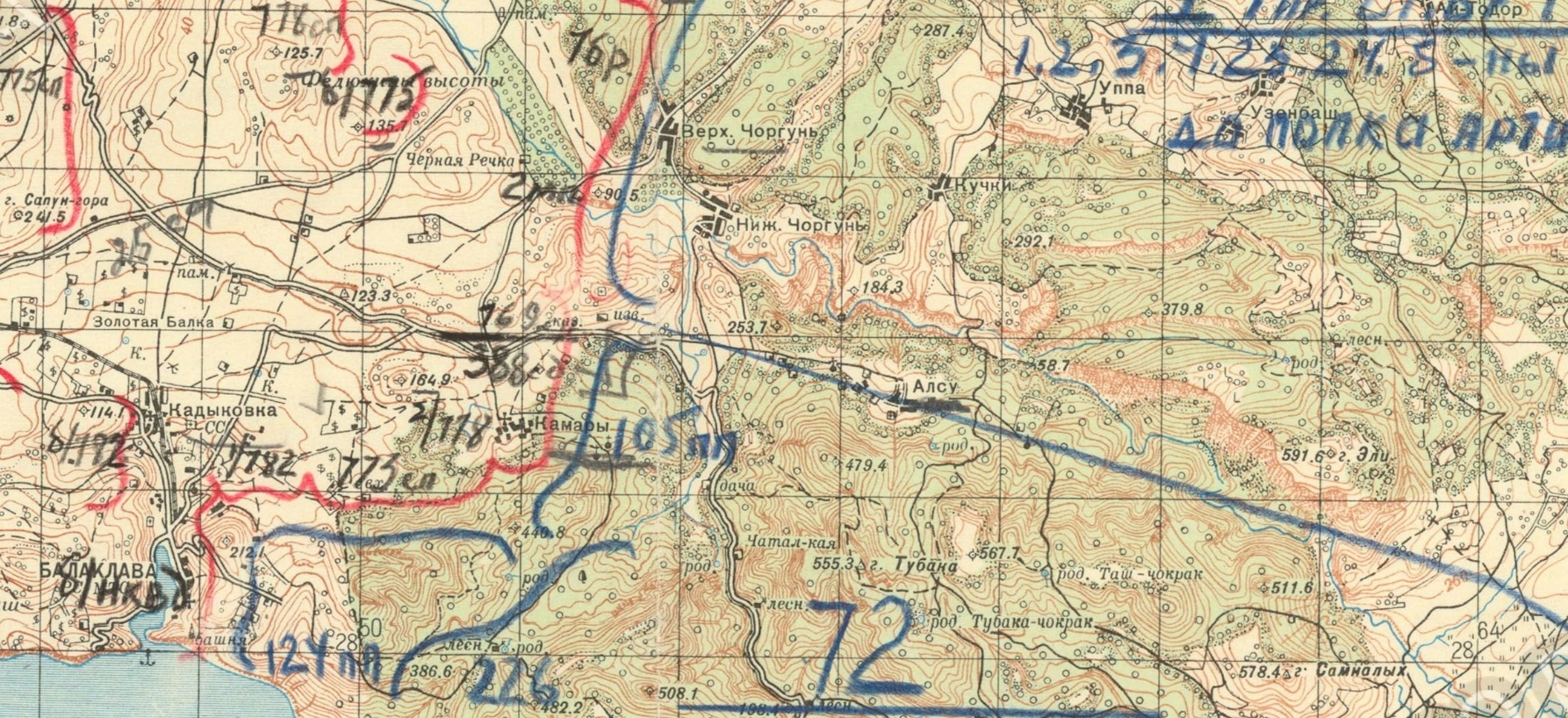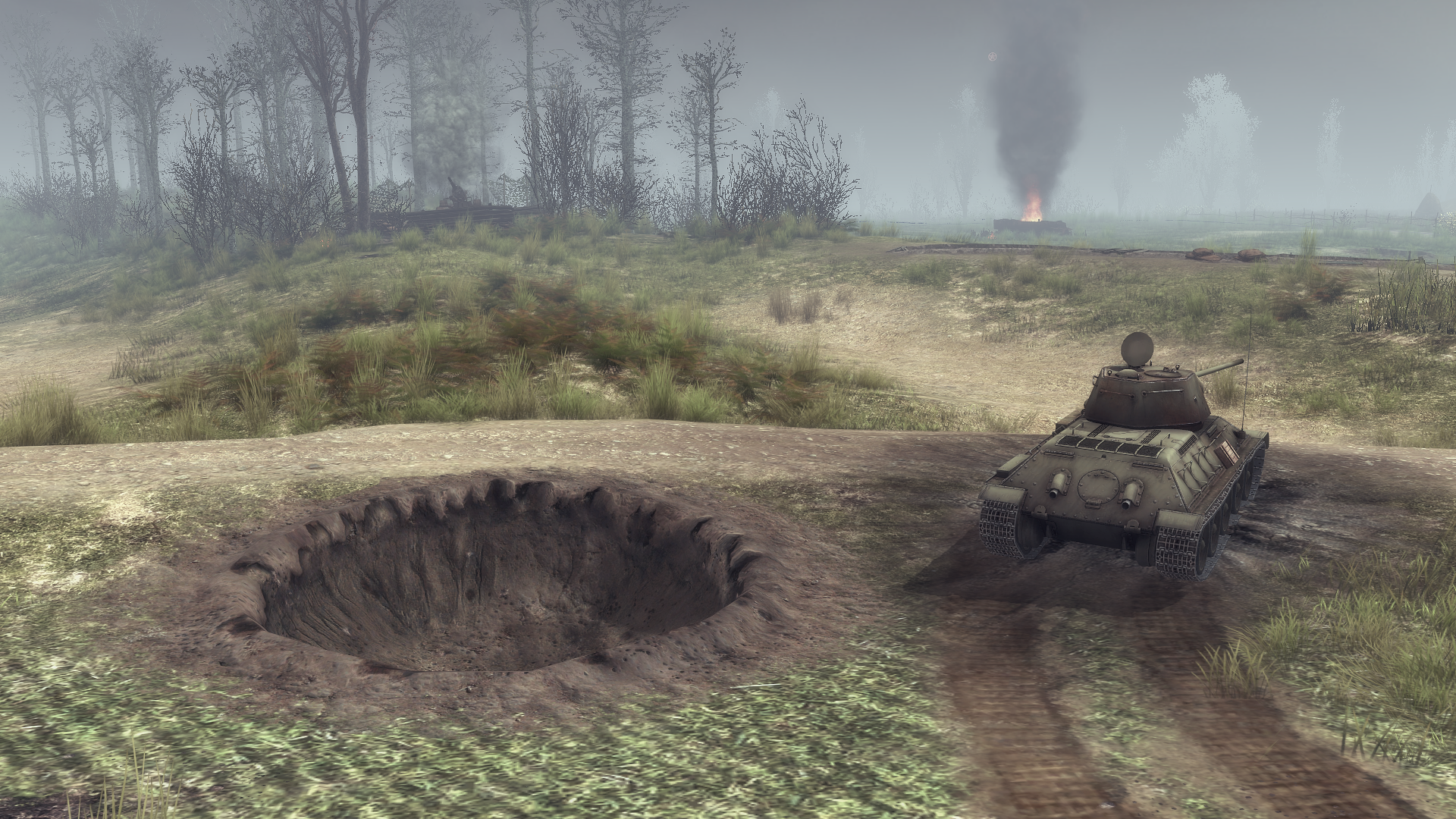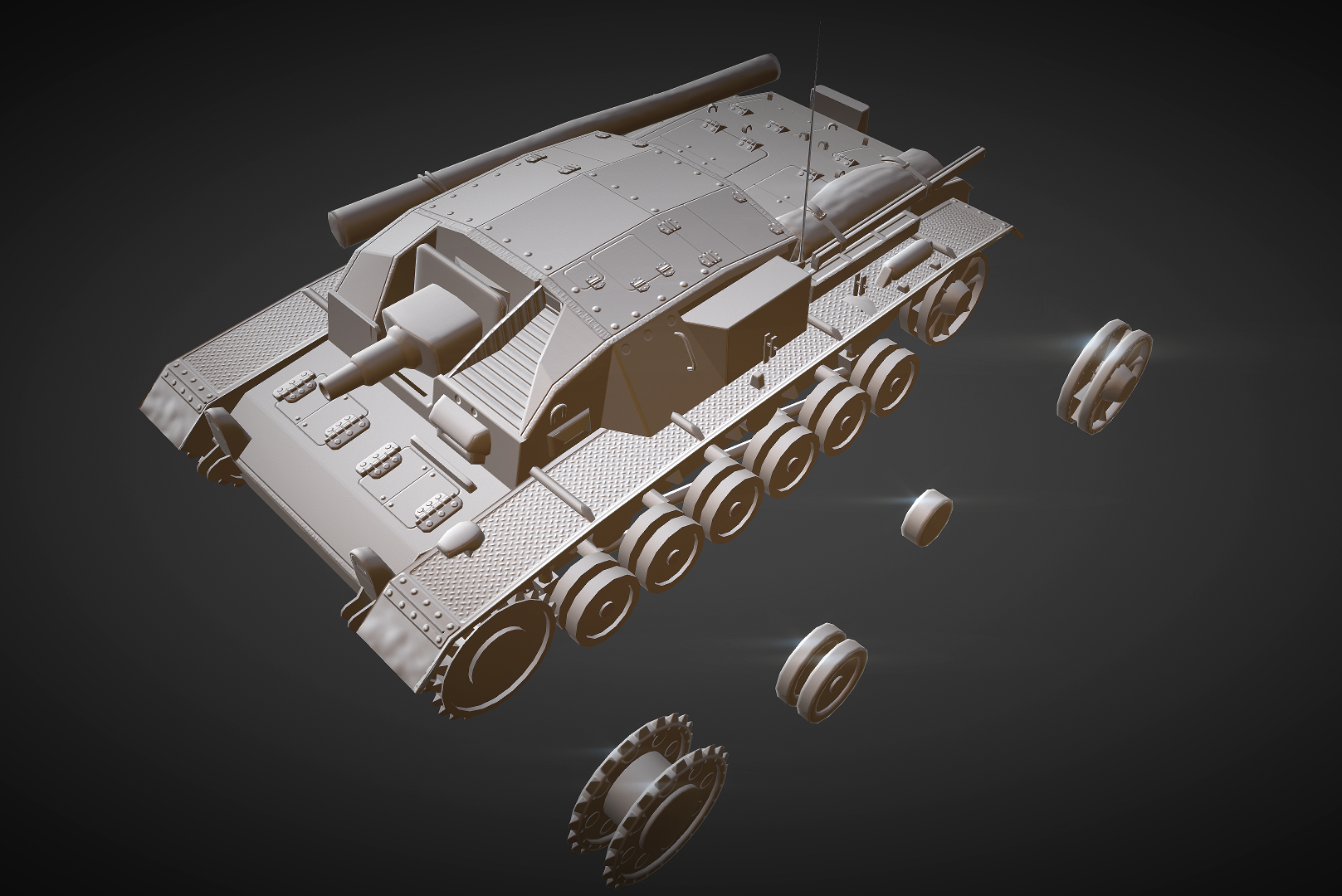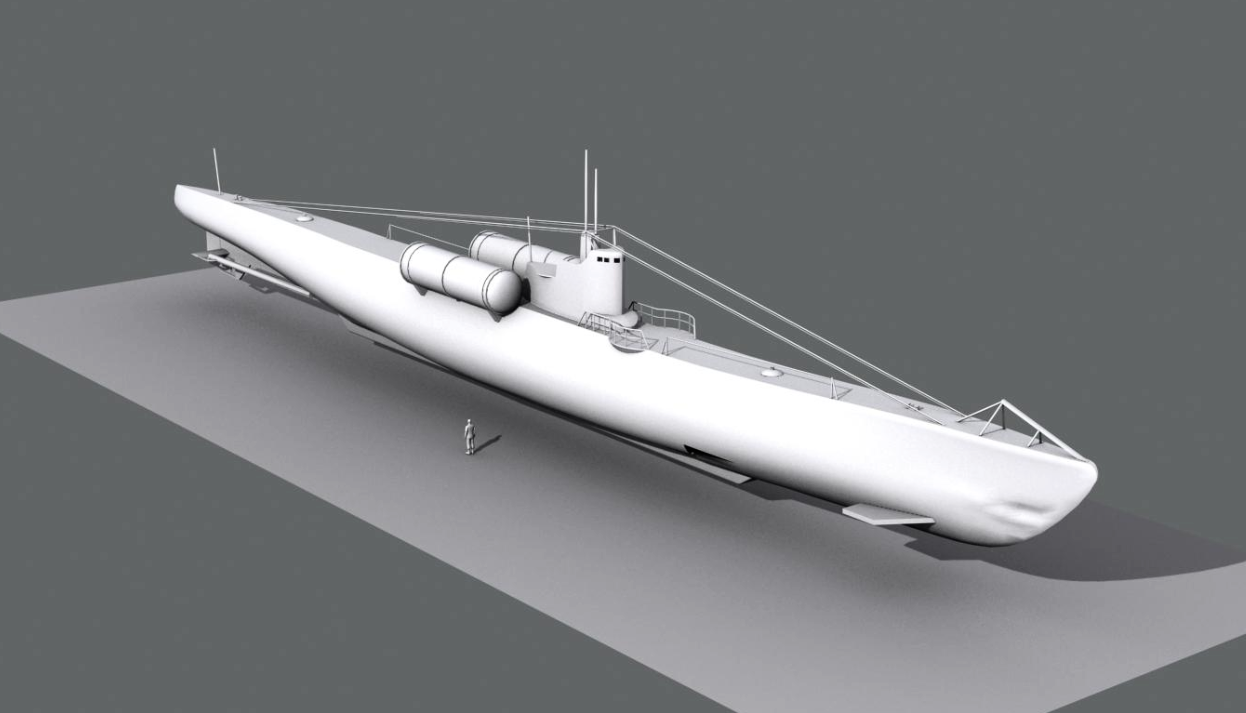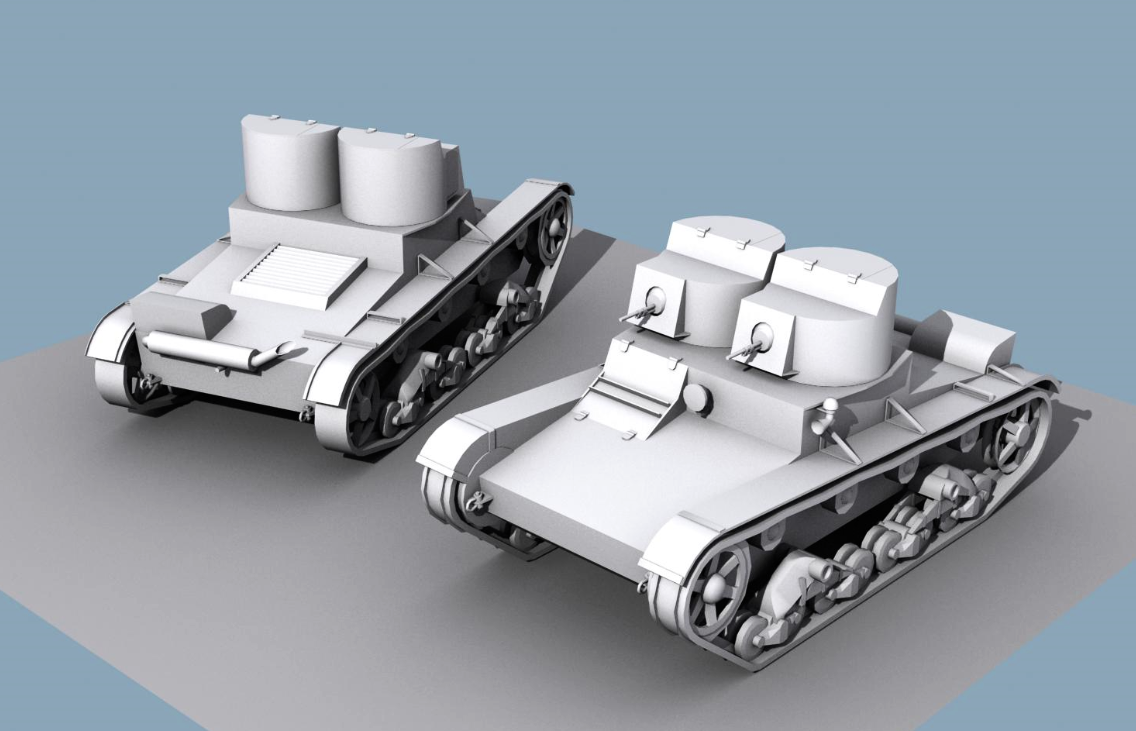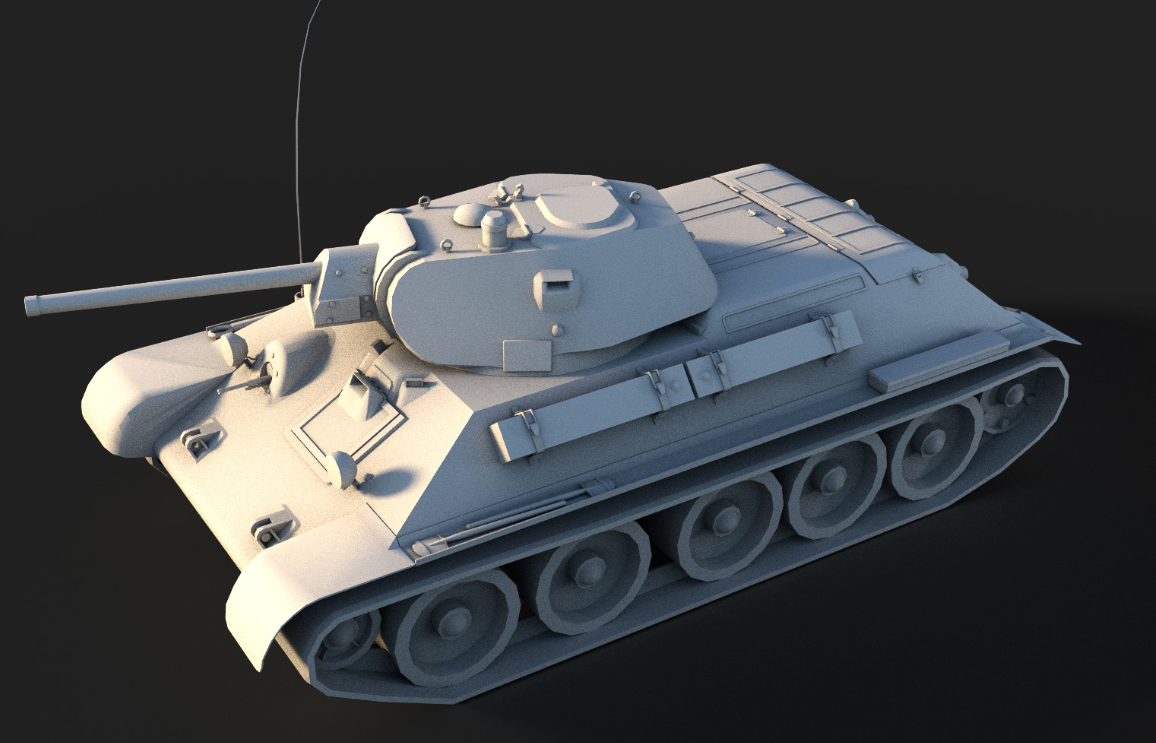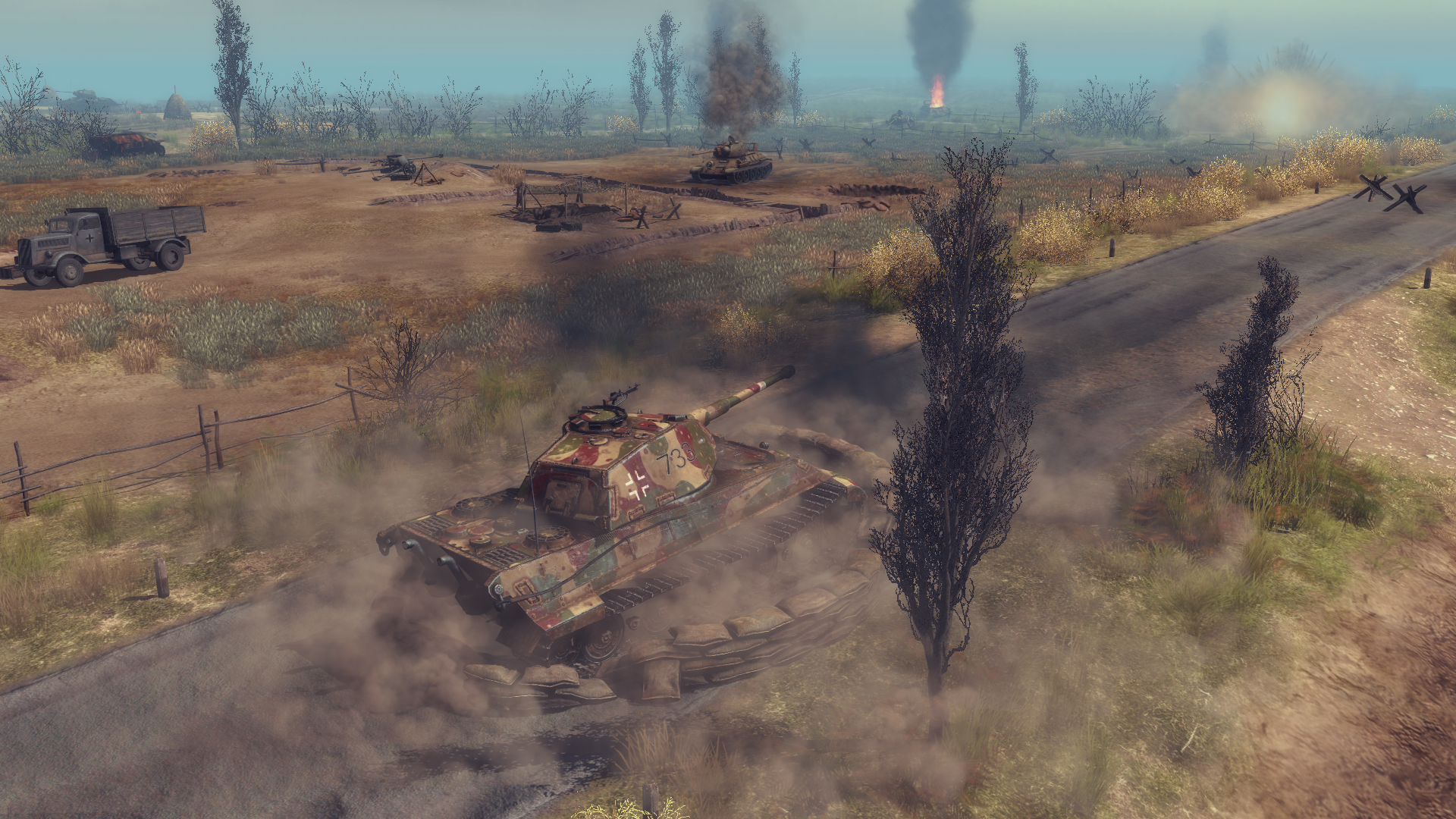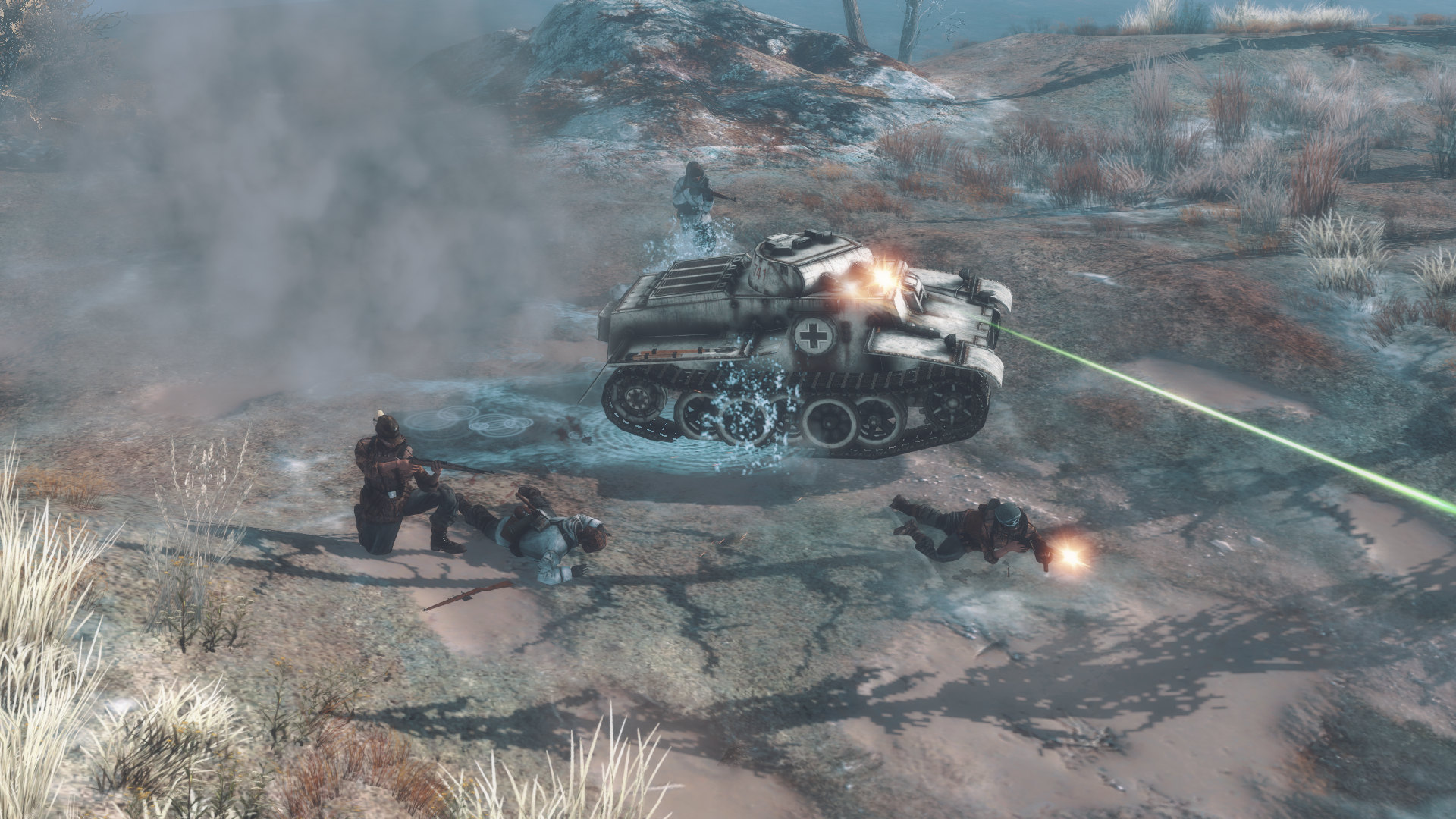
Sep 15, 2017
Call to Arms - Gates of Hell: Ostfront - Cule

Hello chaps. It has been a long time since our last devblog, for which we apologise, but the reality is that work has been going on everywhere and there’s not been any focus of interest for us to write about. But today we have a long-awaited topic.
Aircraft
In Gates of Hell we have rather large maps. This opens the door to several possibilities, and one of which we wanted to do since the beginning of the project was the more relevant presence of aircraft. Air supremacy in WWII was one of the biggest deciding factors on the outcome of the war and changed military tactics forever. Until now in the “Men of War” series, aircraft have been present as background elements or off-map support, and to a limited extent. It is true that aircraft will continue to be an important off-map support element, but we’d also like to offer the players the possibility of manually controlling aircraft in the missions. This adds a new dimension of possibilities to make missions varied! Maybe in the future we test this in multiplayer, but our current development focus is on the single-player.
“Hitler has built a fortress around Europe… But he forgot to put a roof on it”.
~Franklin Roosevelt
Making new models for aircraft is just the tip of the iceberg. A lot of work over time has been invested in making changes to raise the stakes, since aircraft not only have to be usable and enjoyable, but in our case also accurate and historical. So on the one side, we started to fill the game resources with files for new weapon types, ordnance and equipment. You won’t be expecting a Soviet bomber to carry the same bomb as a Stuka?! And likewise, pilots did not have time or availability to reload different ammo types on-board airplanes. As a result, aircraft often used ammo belts with sequences of different rounds - So our modelling of the weapon parameters needs to include a bit of everything, explosiveness and piercing...

Houston, we have a problem!
That is a SC-250 bomb (Sprengbombe Cylindrisch 250kg). Apparently, in german the right grammar would be “Zylindrisch". Why was it spelled like that by the Luftwaffe? You tell us!
… But, in the search of authenticity, we come to a rather impressive obstacle - Can we afford aircraft flying 400km/h on an attack run overhead? In Men of War terms, this means an aircraft would dash over a map in 3 seconds. In Gates of Hell, still less than 10 seconds, and in any case, the radius of turning would envelope the entire map itself. This is an absurd, and compromises need to be taken.
For every aircraft we input the real characteristics into the game - Speed, power, weight, etc. But when this information is processed in-game, we reduced the speed of aircraft to “usable” levels, but of course with our special recipe, which allows for individual planes to conserve their speed differences to a very noticeable level - You won’t be escaping from a fighter aboard a bomber. In a similar nature, the turning radius, acceleration, roll rates etc are all brought to suitable levels.
Another famous problem with implementing planes into RTS is the altitude that aircraft fly at - airplanes either fly too low - in which case they crash into the trees and buildings, or they fly too high - in which case they are not visible in the camera angle. So our solution was straightforward - increase the maximum zoom-out distance, which in addition also opens the field of view for better situational awareness. Nobody forces you to zoom out this much in a regular land battle - but it could be useful in certain cases.



We can talk in detail about all the changes - but it would exceed the amount of words we usually post in 5 devblogs. So let us summarise:
- Whole new soundbank! Lots of effort needs to be invested, now and in the future, in processing the audio we try to collect from the real aircraft. If you try, you’ll be able to spot one of us on Duxford or Biggin Hill air shows.
- New manoeuvring speeds, aircraft are generally more maneuverable but also more inertia-based
- much longer take-off/landing runs
- Airplanes smoke when they start to receive damage. Take extra care when you are smoking
- Different airplanes take more damage to take down in the different components
- Rear defensive turrets are now operational
- Dropping of torpedoes implemented for deep water scenarios
- Sounds for undercarriage retraction/deployment, canopy opening/closing, engine starting, and different sounds for engine settings (accelerating, slowing down, etc)


Make no mistake - developing new aircraft is like making a whole new bunch of vehicles, something that nobody before has prioritised too much. Now lies a very long journey for the 3D department to make all the new aircraft models in the same quality as our other assets.
You can help us by sending us clear references of different camos/aircraft that we can make. Unfortunately our 3D modellers are also overloaded with other models to make - so we will post renders and pictures gradually in the future.
We’d like to make many more changes to aircraft to make them even more enjoyable and but this depends on the programming capacities later down the road and how people react to its implementation.
“Air mastery is today the supreme expression of military power”.
~Winston Churchill

















